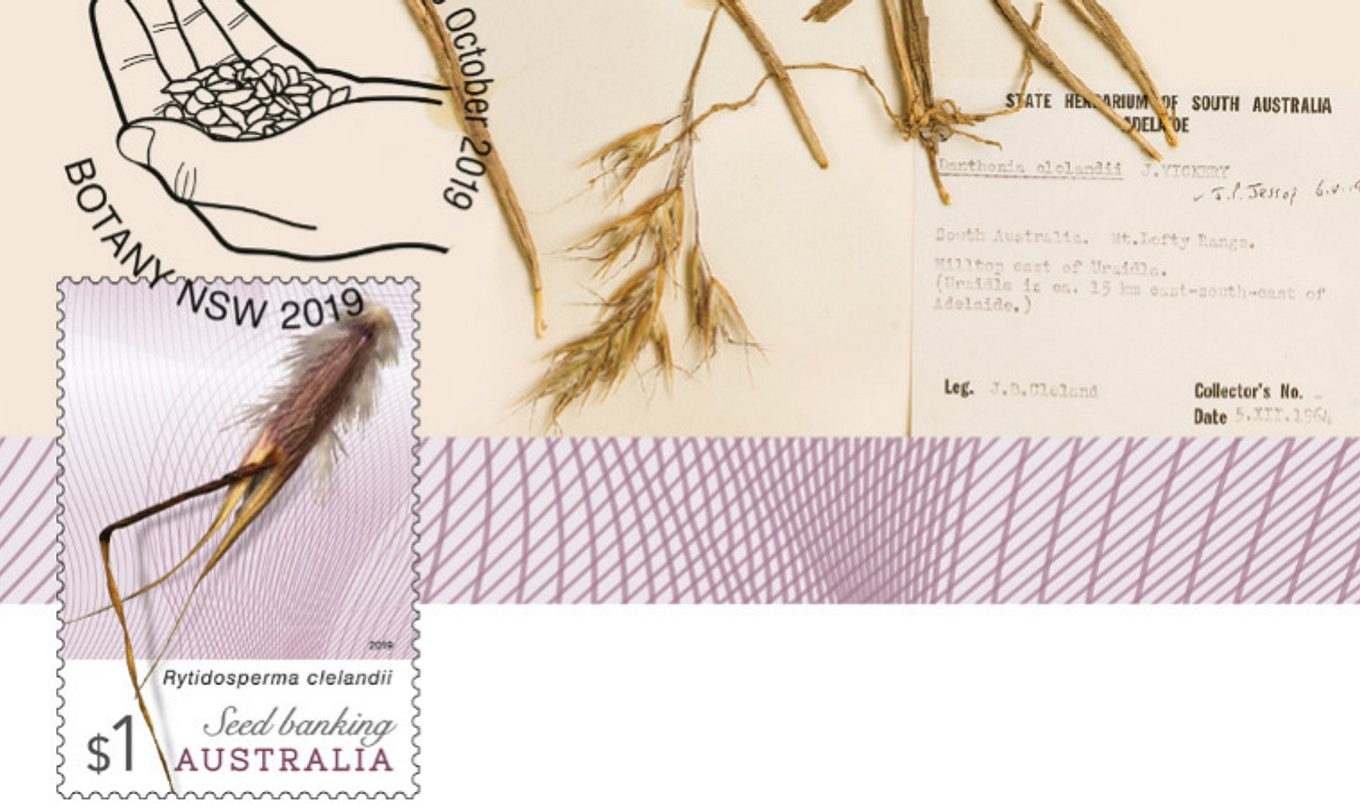South Australian seed featured on new postage stamp
Australia Post recently released a selection of stamps that highlight the importance of seed banking and one of the three stamps shows a rare grass native to South Australia called Rytidosperma clelandii.

Also known as Cleland’s Wallaby-Grass, the featured perennial grass is named after notable South Australian naturalist, Sir J.B. Cleland, who was a member and president of the Field Society of SA which was instrumental in establishing some of South Australia’s first conservation parks.
Botanic Gardens and State Herbarium (BGSH) Director Dr Lucy Sutherland said Cleland’s Wallaby-Grass is highly localised, growing in the wetter parts of South Australia’s Mount Lofty Ranges and the Adelaide Hills area.
“It is classified as rare, and favours shallow, leached soils on rocky slopes in the lightly-shaded understorey of eucalypt woodland,” Dr Sutherland said.
“It has flat or rolled leaf blades up to 50 centimetres long and it can reach 1.2 metres in height.
“The flowers are notable for their conspicuous anthers, which are about half a centimetre long and brightly coloured in shades of yellow, orange or salmon red.
“The grass seed is purple with three distinct rows of hairs and a twisted coppery bent awn.”
The $1 stamp showcases work being undertaken by South Australia’s Seed Conservation Centre.
Based within BGSH Adelaide Botanic Garden, the SA Seed Conservation Centre collects seeds from regions across the state to safeguard them in long term storage at subzero temperatures.
“By 2020, the Centre aims to have at least 90% of South Australia’s threatened plant species in the Seed Bank,” Dr Sutherland said.
“Banking seeds involves the collection and safe storage of seeds which can be used for conservation and research.
“It’s a way to safeguard against species extinction, and can be a source of quality seed for the restoration of depleted plant communities and habitats.
“Seed banks also contribute to the world’s largest seed bank, the Millennium Seed Bank Partnership of the Royal Botanic Gardens, Kew, in the UK, which functions as an offsite back-up for our national seed collections.”
The Australian Seed Bank Partnership works with Australia’s botanic gardens and herbaria, state environment agencies, academic institutions and non-government organisations to secure seed collections, enhance the understanding of seed biology to improve conservation and restoration outcomes, and build capacity in Australia for seed science and banking.
National Coordinator of the Australian Seed Bank Partnership Damian Wrigley said seeds are fundamental to the survival of many native flora and fauna species.
“The seeds represented on the stamps give just a hint of the diversity of seeds of Australian plants and suggests the various means that plants have evolved to spread their seeds around the country,” Mr Wrigley said.
“Short bristly hairs, as shown on the Rytidosperma suggest transport in fur or feathers of animals.
“The ‘shuttlecock’ seeds of Petrophile suggest wind-dispersal, and the tiny seeds of Epacris petrophila suggest movement by wind or water, mixed with grains of soil, or in mud sticking to the feet of birds that frequent the often boggy habitat of the species.”
Also featured on the stamp series are Epacris petrophila (a near-threatened alpine shrub from the Australian Alps and high-altitude areas in Victoria and Tasmania) and Petrophile latericola (an endangered shrub from Western Australia).
Read all about the stamp and the importance of seed banking at Australia Post’s website here.

